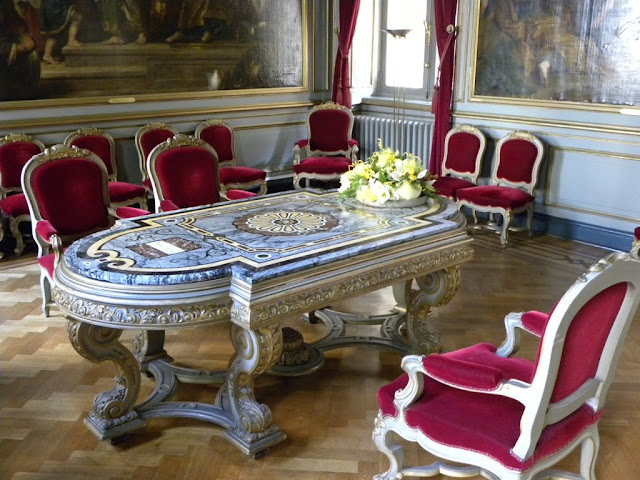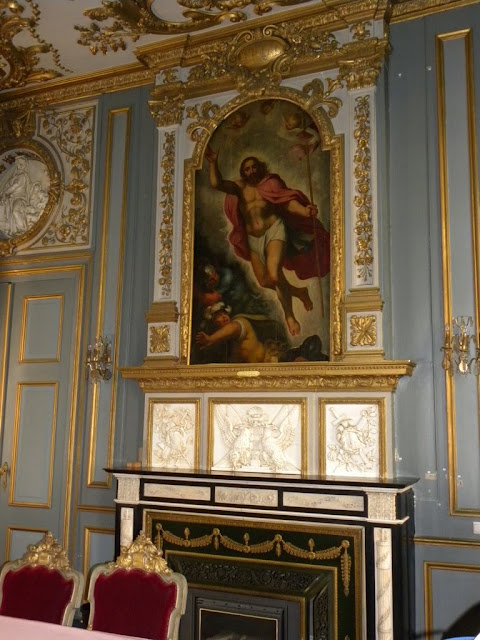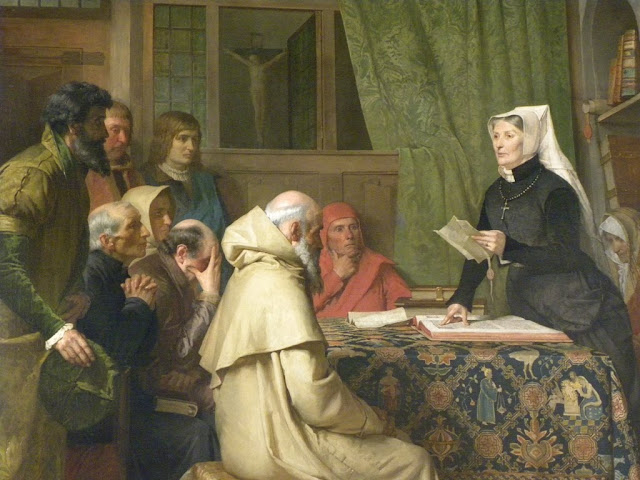This was an ideal location in Leuven for the new Town Hall. People coming from Brussels (the big rival for the capital of Brabant) saw the prestigious building when they entered the City. However, this market place and the Town Hall had to be build on the grounds of a graveyard. The graveyard of the Saint Peter’s church had to be unhallowed and removed. The city of Leuven bought this ground from the church. In return the Saint Peter’s church was allowed to expand their church.
When I saw the Town Hall, I thought how wonderful, personally I love details and decorations. Here you will find an abundance of detail. During the 2nd half of 19th century statues of 236 persons were placed in niches. They all wear costumes from the period they lived in. The images reflect the different classes of society and in the church: well known people from Leuven, artists and scholars (bottom floor), patron saints of the parish (one floor above), the nobility of Brabant, Counts, Dukes (one floor higher) and the biblical figures in the towers. The pedestals on which the statues stand represent stories from the Bible, sins and punishments. In the pictures below you see an example of the Angel Lucifer who displays himself bigger than God. In the next picture, God throws Lucifer in the purgatory. Many of these stories had an educational background, most people could not read and these images showed them the difference between right and wrong. The carvings in the "Walking Hall" and the "Gothic Hall" of William Ards are also based on scenes from the Bible.
There was no separation of powers at the time. The Town Hall was both the legislative, judicial, executing, and religious power. Anna van Rosemale on the last painting of this article was buried alive because she preached the Bible from a Protestant viewpoint.
Net zoals de Sint-Pieters kerk werden de plannen van het stadhuis van Leuven getekend door Sulpitius van Vorst. De bouw van het 3de stadhuis startte in 1439 met architecten Sulpitius van Vorst, Jan Keldermans II en Matheus de Layens die elk op hun beurt de leiding overnamen. Het gebouw in laatgotisch stijl telt 3 verdiepingen, op iedere hoek pronkt een toren en in het midden 2 noktorens. Net zoals bij de Sint-Pieters kerk maakte Sulpitius van Vorst een inschattingsfout met betrekking tot de ondergrond waarop het stadhuis werd gebouwd. In de oorspronkelijke planning was er sprake van een Belfort. Deze Belforttoren kon echter niet geplaatst worden door onstabiele ondergrond. Dit werd ontdekt door Matheus de Layens, 9 jaar na de start van de bouw.
Dit was de ideale lokatie voor het nieuwe stadhuis van Leuven. Iedereen die van Brussel (de grote rivaal van Leuven voor de titel van hoofdstad van Brabant) de stad binnenkomt ziet onmiddellijk het prestigiueze gebouw. De markt alsook het stadhuis dienden te worden gebouwd op de gronden van een kerkhof. Het kerkhof van de Sint-Pieterskerk werden ontheiligd en verwijderd. Leuven kocht deze gronden in ruil voor een expansie van de Sint-Pieterskerk.
Toen ik het stadhuis aanschouwde dacht ik: wondermooi, persoonlijk hou ik van details en versieringen. Hier vindt je een overvloed aan details. Gedurende de 2de helft van de 19de eeuw werden 236 beelden van personen in de nissen geplaatst. Allen dragen ze klederdracht uit de tijd waarin ze leefden. De beelden weerspiegelen klassen van de bevolking en kerk: bekende Leuvenaars, kunstenaars en geleerden (benedenverdiep), Patroonheiligen van de parochie (een verdiep hoger), de adel van Brabant, Graven, Hertogen (nog een verdiep hoger) en de Bijbelse figuren in de torens. Op de sokkels, waarop de beelden staan, worden tafferelen uit de bijbel uitgebeeld. Op de foto’s zie je een voorbeeld van de Engel Lucifer die zich groter waant dan God. In het volgende beeld wordt hij door God in het vagevuur gegooid. Veel van deze tafferelen hebben een opvoedende rol daar de mensen toen analfabeet waren. Zo leerden ze het verschil tussen goed en kwaad.
Er was ook geen splitsing van de machten in die tijd. Het stadhuis was zowel de wetgevende, rechterlijke, uitvoerde en religische macht. Hier werden mensen ook terrechtgesteld zoals Anna van Rosemale uit het laatste schilderij van dit artikel. Zij werd levend begravend daar ze de bevolking de bijbel verkondigde vanuit protestants oogpunt.















Previous Leuven article: University Library, Leuven
Return to main page












The architecture is lovely... and you captured each image perfectly!
ReplyDeleteimpressive,pictures are great:-)
ReplyDelete